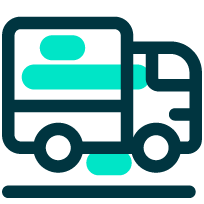A 1 group commercial espresso machine typically has one boiler, which heats water for both brewing espresso and generating steam for milk frothing.
The machine may have separate controls or switches to toggle between brewing and steaming modes.
Having only a single boiler can have a few drawbacks, particularly when compared to 2-group and 3-group machines with multiple boilers. These include:
Temperature control: With a single boiler, the machine needs to switch between brewing and steaming modes. This means the temperature of the boiler must be adjusted each time, which can result in fluctuations in brew water temperature. Inconsistent water temperature can affect the quality and consistency of the espresso shots.
Workflow efficiency: The need to switch between brewing and steaming modes can slow down the workflow in a busy coffee shop. Baristas have to wait for the boiler temperature to adjust, which can lead to increased preparation time for each drink.
Simultaneous brewing and steaming: With only one boiler, it's not possible to simultaneously brew espresso and steam milk. Baristas have to wait for the boiler to generate steam before they can froth milk, which can affect the speed and efficiency of drink preparation during peak periods.
Temperature recovery: After using the steam wand to froth milk, the boiler needs time to recover and reach the appropriate brewing temperature again. This recovery time can cause delays and impact the overall speed of service.
Limited capacity: Single-boiler machines are generally designed for lower volume environments. If you have high demand for espresso-based beverages, a 1 group machine may not be able to keep up with the production requirements.
These drawbacks may not be relevant if the single-boiler coffee machine is used in a low-volume setting or for occasional use.














